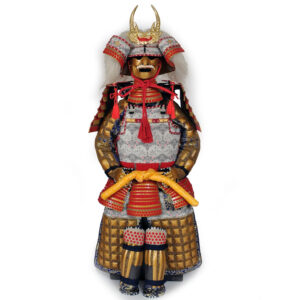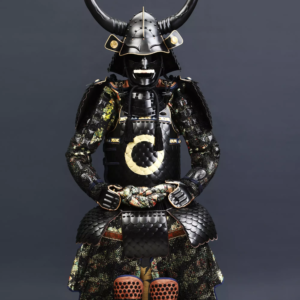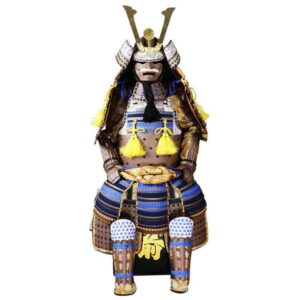Description
This meticulously handcrafted Samurai Aka Armor Set represents the pinnacle of traditional Japanese armor craftsmanship. Each piece is carefully created by master armor smiths, ensuring authenticity and attention to detail. This fully functional armor is designed to be both a protective gear and a striking display piece, making it a perfect addition to any collection.
Features:
- Authentic Craftsmanship: Handmade by master armor smiths, replicating traditional Japanese techniques.
- Complete Armor Set: Includes all components shown in the pictures, along with a black lacquered display box and stand.
- Adjustable Fit: Pre-fitted for individuals between 5’3″ and 6’1″ with an average build. Easily adjustable for a comfortable fit.
- High-Quality Materials: Constructed with premium materials, including metal, cotton, and fibers for durability and historical accuracy.
- Detailed Components: Each piece is intricately designed, featuring traditional Odoshi cotton lacing and vibrant colors.
Component Details:
- Helmet (Kabuto 兜): Red metal Kabuto helmet with hair, measuring 27 inches in length.
- Mask (Menpo 面頬): Red metal Menpo with a mustache, 6.7 inches in length.
- Shoulder Guards (Sode 袖): Red metal plates laced with white rope.
- Breastplate (Do 胴): Decorated in red, white, and gold.
- Shin Guards (Sunaete 臑当): Upper width: 3.9 inches, middle width: 5.1 inches, lower width: 3.9 inches.
- Belt (Obi 帯): Red belt, 78.7 inches in length.
- Jacket: Made from cotton and fibers.
- Chest Measurement: 42.1 inches.
- Waist Measurement: 39.4 inches.
Dimensions and Weight:
- Armor Dimensions: 70.9 x 29.9 x 29.9 inches
- Armor Weight: 44.1 lbs
- Packaging Size: 25 x 29.9 x 21.7 inches
- Weight with Packaging: 55.1 lbs



Historical Background:
Samurai armor, or “yoroi,” is more than just protective gear; it is a symbol of the samurai’s status, honor, and dedication. Originating in the Heian period and evolving through the centuries, samurai armor was designed not only for protection but also to convey the warrior’s rank and personality.
The Muromachi period (1336–1573) was a time of significant cultural and military transformation in Japan. The Ashikaga shogunate, headquartered in Kyoto, oversaw a period marked by the rise of powerful regional warlords and the frequent conflicts that characterized the Sengoku (Warring States) period. This era saw the development of new armor styles, such as the Tosei gusoku, which provided enhanced mobility and protection for samurai warriors.
The samurai armor from this period featured intricate lacing techniques, known as kebiki-odoshi, which were not only functional but also highly decorative. The vibrant colors and elaborate designs reflected the samurai’s aesthetic sensibilities and their clan’s unique identity. The inclusion of symbols and motifs, such as the clan mon (crest), further personalized the armor.
The samurai were not only skilled warriors but also patrons of the arts and culture. Their armor served as a testament to their martial prowess and their appreciation for beauty and craftsmanship. The Muromachi Hishi-Toji Samurai Gusoku, with its detailed construction and traditional features, embodies the spirit of this remarkable period in Japanese history, capturing the essence of the samurai’s dual role as both warriors and connoisseurs of fine art.








Reviews
There are no reviews yet.